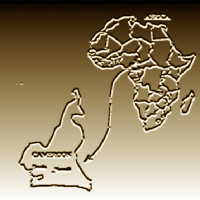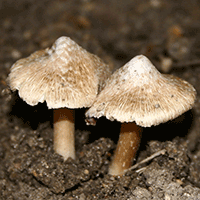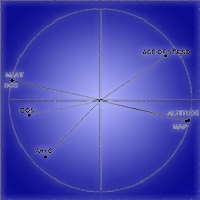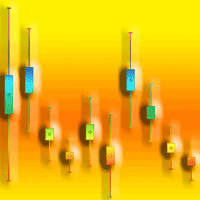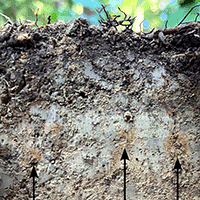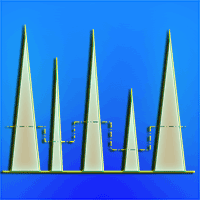
Ectomycorrhizae of Norway spruce from its southernmost natural distribution range in Serbia
Marina Katanić (1) , Saša Orlović (1), Tine Grebenc (2), Marko Bajc (2), Saša Pekeč (1), Milan Drekić (1), Hojka Kraigher (2)
iForest - Biogeosciences and Forestry, Volume 12, Issue 1, Pages 43-50 (2019)
doi: https://doi.org/10.3832/ifor2729-011
Published: Jan 10, 2019 - Copyright © 2019 SISEF
Research Articles
Abstract
Norway spruce (Picea abies Karst.) reaches its southernmost limit in the mountainous regions of south Serbia and Bulgaria. The species is a regionally important timber species for the wood industry and a significant host for various ectomycorrhizal fungi, including edible species. We analysed ectomycorrhizal community and fine root parameters of high continental / subalpine Norway spruce stands at three sites (Stara planina, Kopaonik, Tara) located in protected areas in Serbia. In addition, we assessed the potential effects of altitude and growing season on the ectomycorrhizal diversity and fine root parameters. Using standardised sampling in combination with morpho-anatomical and molecular identification of ectomycorrhizae, we recorded 29 different anatomorphotypes. None of the identified fungi belonged to commercial edible fungal species. Compared to other Norway spruce ectomycorrhiza studies in central Europe, sites in Serbia exhibited lower species diversity and different dominant species composition, with Cenococcum spp. and Russula spp. as the dominant ectomycorrhizal fungi. A number of ectomycorrhizal types and the value of the species richness index differed between Stara planina and Tara in the autumn, but the influence of site and season on the studied diversity indices was not significant. The total number of fine roots increased in the spring, while percentage of vital ectomycorrhizal root tips increased in the autumn. This study was the first examination of Norway spruce ectomycorrhizal communities at the edge of the natural geographical range of the species.
Keywords
Ectomycorrhiza, Picea abies Karst., Community Structure, Diversity, Fine Roots
Authors’ Info
Authors’ address
Saša Orlović
Saša Pekeč
Milan Drekić
University of Novi Sad, Institute of Lowland Forestry and Environment, Antona Cehova 13, 21000 Novi Sad (Serbia)
Marko Bajc
Hojka Kraigher
Slovenian Forestry Institute, Večna pot 2, 1000 Ljubljana (Slovenia)
Corresponding author
Paper Info
Citation
Katanić M, Orlović S, Grebenc T, Bajc M, Pekeč S, Drekić M, Kraigher H (2019). Ectomycorrhizae of Norway spruce from its southernmost natural distribution range in Serbia. iForest 12: 43-50. - doi: 10.3832/ifor2729-011
Academic Editor
Alberto Santini
Paper history
Received: Jan 18, 2018
Accepted: Oct 26, 2018
First online: Jan 10, 2019
Publication Date: Feb 28, 2019
Publication Time: 2.53 months
Copyright Information
© SISEF - The Italian Society of Silviculture and Forest Ecology 2019
Open Access
This article is distributed under the terms of the Creative Commons Attribution-Non Commercial 4.0 International (https://creativecommons.org/licenses/by-nc/4.0/), which permits unrestricted use, distribution, and reproduction in any medium, provided you give appropriate credit to the original author(s) and the source, provide a link to the Creative Commons license, and indicate if changes were made.
Web Metrics
Breakdown by View Type
Article Usage
Total Article Views: 46614
(from publication date up to now)
Breakdown by View Type
HTML Page Views: 39085
Abstract Page Views: 3615
PDF Downloads: 2924
Citation/Reference Downloads: 3
XML Downloads: 987
Web Metrics
Days since publication: 2547
Overall contacts: 46614
Avg. contacts per week: 128.11
Citation Metrics
Article Citations
Article citations are based on data periodically collected from the Clarivate Web of Science web site
(last update: Mar 2025)
Total number of cites (since 2019): 4
Average cites per year: 0.57
Publication Metrics
by Dimensions ©
Articles citing this article
List of the papers citing this article based on CrossRef Cited-by.
References
Characterization of ectomycorrhiza. In: “Methods in Microbiology, vol. 23” (Norris JR, Read DJ, Varma AK eds). Academic Press, London, UK, pp. 25-72.
Gscholar
Colour atlas of ectomycorrhizae (1st-13th edn). Einhorn-Verlag Eduard Dietenberger, Schwäbisch Gmünd, Germany.
Gscholar
Descriptions of ectomycorrhizae (1st-10th edn). Einhorn-Verlag Eduard Dietenberger , Schwäbisch Gmünd, Germany.
Gscholar
Introduction to microbiology. Addison-Wesley Publishing Company, Reading, UK, pp. 242-244.
Gscholar
Genetička varijabilnost obične smreke (Picea abies [L.] H. Karst) u bosanskom dijelu Dinarida [Genetic variability of Norway spruce (Picea abies [L.] Karst.) in the Bosnian part of the Dinaric mountain range]. Šumarski List 131: 237-246. [in Slovenian]
Gscholar
National Forest Inventory of Republic of Serbia. The growing stock of the Republic of Serbia. Ministry of Agriculture, Forestry and Water Management of the Republic of Serbia - Forest Directorate, Belgrade, Serbia, pp. 238.
Gscholar
Dendrologija [Dendrology]. Naučna knjiga, Beograd, Serbia, pp. 522. [in Serbian]
Gscholar
Towards a unified paradigm for sequence-based identification of fungi. Molecular Ecology 22: 5271-5277.
CrossRef | Gscholar
Tipi mikorize: taksonomija, pomen, aplikacija [Types of ectomycorrhizae - their taxonomy, role and application]. Zbornik Gozdarstva in Lesarstva 49: 33-66. [in Slovenian]
Gscholar
Atlas of woody plant roots: morphology and anatomy with special emphasis on fine roots. Studia Forestalia Slovenia 147 (1st edn), Slovenian Forestry Institute, The Silva Slovenica Publishing Centre, Ljubljana, Slovenia, pp. 118.
Gscholar
Morphological plasticity of ectomycorrhizal short roots in Betula sp. and Picea abies forests across climate and forest succession gradients: its role in changing environments. Frontiers in Plant Science 4: 1-10.
CrossRef | Gscholar
Mycorrhizal symbiosis (3rd edn). Elsevier-Academic Press, London, UK, pp. 787.
Gscholar
Statistical methods (6th edn). The Iowa State University Press, Ames, Iowa, USA, pp. 503.
Gscholar
Molecular and morphological analyses confirm Rhizopogon verii as a widely distributed ectomycorrhizal false truffle in Europe, and its presence in South America. Mycorrhiza 26: 377-388.
CrossRef | Gscholar
Fungal diversity in ectomyccorhizal communities of Norway spruce (Picea abies (L.) Karst.) and beech (Fagus sylvatica L.) along north-south transects in Europe. In: “Carbon and Nitrogen Cycling in European Forest Ecosystems” (Schulze E-D ed). Ecological Studies 142, Springer-Verlag, Berlin, Heidelberg, Germany, pp. 343-365.
Gscholar
Ectomycorrhizal and soil enzyme activity profiles at the tree line. Meeting of COST Action FP1305 BioLink: Linking soil biodiversity and ecosystem function in European forests “Belowground biodiversity in changing environment”. Jagiellonian University, Kraków, Poland, pp. 25.
Gscholar
Amplification and direct sequencing of fungal ribosomal RNA genes for phylogenetics. In: “PCR Protocols. A guide to methods and applications” (Innis MA, Gelfand DH, Sninsky JJ, White TJ eds). Academic Press, San Diego, CA, USA, pp. 315-322.
CrossRef | Gscholar


